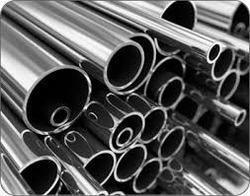STAINLESS STEEL PIPES
Stainless steel is a versatile material comprised of a steel alloy and a small percentage of chromium—the addition of chromium adds to the material’s corrosion resistance, a trait that earned stainless steel its name. Because stainless steel is also low-maintenance, oxidation resistant, and doesn’t affect other metals it comes in contact with, it is frequently used in a large array of applications, especially in piping and tubing manufacturing. Based on the end use of the pipe, stainless steel piping is broken down into several categories.
Pipes and tubes are sometimes difficult to classify, and tend to be distinguished based on function. In addition to these classifications, stainless steel is also distinguished by type and grade. For tubing and piping applications, type 304 stainless steel is a common selection because it is highly chemical- and corrosion-resistant. However, type 304 stainless steel is not compatible with applications where temperatures fall between 800 and 1640 degrees Fahrenheit (F) because it is prone to carbide precipitation, a result of the material’s .08 percent carbon content limit. Stainless steel type 304L circumvents this problem because it has a lower carbon content limit, and therefore can be subjected to welding and higher temperature applications. Other types of stainless steel often possess additives (such as nickel or molybdenum) which strengthen traits that are desirable in particular applications.


